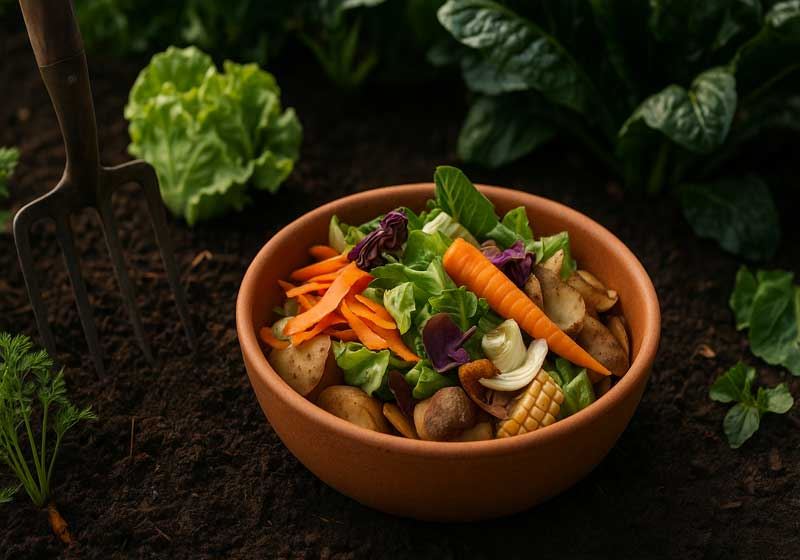By Marie-Antoinette Issa.
If you were to ask a movie buff ‘What is a DOP?’ they would likely explain it to refer to a Director of Photography!
However, in the world of Italian gastronomy, it holds a completely different - albeit no less significant – meaning signifying a level of quality, tradition and authenticity that is deeply rooted in the country's culinary heritage.
This guide delves into the history and cultural significance of DOP products, exploring the criteria they must meet to receive this prestigious designation and revealing how local Australian eateries can seek out and support DOP-certified foods, to contribute to the preservation of Italy's iconic tastes and traditions abroad.

What is DOP?
DOP stands for Denominazione di Origine Protetta, which translates to Protected Designation of Origin in English. It is a European Union quality label that protects the names of specific regional foods, guaranteeing their authenticity and origin.
To qualify for DOP certification, products must adhere to strict criteria regarding their production methods, ingredients and geographical origin. This designation serves to safeguard traditional culinary practices, promote local economies and preserve cultural heritage.
Cultural and culinary significance of iconic DOP products:
Parmigiano Reggiano, often hailed as the ‘King of Cheese’, is one of Italy's most popular DOP products.
Produced exclusively in the provinces of Parma, Reggio Emilia, Modena and parts of Mantua and Bologna, Parmigiano Reggiano is made from raw cow's milk, rennet and salt, following centuries-old methods.
The cheese undergoes a rigorous ageing process, lasting a minimum of 12 months, resulting in its signature nutty flavour and crystalline texture. Parmigiano Reggiano holds a special place in Italian cuisine, gracing pasta dishes, risottos and antipasti platters with its unmistakable taste.

Similarly, prosciutto di Parma, or Parma ham, is another esteemed DOP product hailing from the Emilia-Romagna region of Italy. Made from specially selected pork legs, sea salt and air, prosciutto di Parma undergoes a curing process lasting a minimum of 12 months.
This meticulous process imbues the ham with its delicate flavour and tender texture, making it a prized ingredient in Italian cuisine. Whether enjoyed thinly sliced as an antipasto, draped over melon or incorporated into pasta dishes, prosciutto di Parma epitomises the artistry of Italian charcuterie.
Aceto balsamico tradizionale di Modena, or traditional balsamic vinegar of Modena, is another cherished DOP product revered for its complexity and depth of flavour. Produced exclusively in the Emilia-Romagna region, this artisanal vinegar is made from cooked grapes that are aged through a slow and meticulous process.
The vinegar then is aged in wooden barrels for a minimum of 12 years, resulting in a rich, syrupy liquid with notes of fruit, caramel and wood. Aceto balsamico tradizionale di Modena is prized for its versatility, lending a sweet and tangy touch to salads, cheese, desserts and even meat dishes.

Beyond these basics, Italy also boasts a plethora of other DOP-certified products that showcase the country's diverse culinary landscape. From the earthy truffles of Piedmont to the delicate olive oils of Tuscany and the aromatic wines of Sicily, each DOP product reflects the unique terroir and artisanal craftsmanship of its respective region.
Other Italian food classifications:
Interestingly, Italian food classifications extend beyond DOP to include other designations such as IGP/PGI (Indicazione Geografica Protetta/Protected Geographical Indication) and STG (Specialita Tradizionale Garantita/Guaranteed Traditional Specialty).
IGP/PGI status denotes products closely tied to their geographical origin, using traditional techniques and local ingredients, but with more flexibility than DOP.

STG, on the other hand, highlights products with traditional recipes and methods, regardless of geographical origin. These classifications are designed to assure consumers of quality and authenticity while celebrating the rich diversity of Italian gastronomy.
The impact of DOP on the Australian food industry:
The influence of the DOP classification has extended beyond ‘the boot’ and permeated Italian food culture around the world. For Chefs, who commit to the use of DOP products in their cooking - such as Luigi Esposito, owner and Head Chef of Via Napoli Pizzeria, and its newly opened sister pizzeria 170 Grammi - DOP certification represents more than just a label; it signifies a commitment to preserving the rich culinary heritage of his country of birth.
"For me, it's about the quality. Because there is a limited quantity of DOP products available, there's a real wow factor to the ingredients," says Chef Luigi.
Growing up in the ‘City of Pizza’, Naples, and now with the opening of a Roman-style pizzeria reflecting the thinner, crunchier style of the Eternal City, Luigi’s passion for authenticity in his kitchens in Australia aims to ensure that every dish reflects the traditional tastes across Italy.

"For this reason, every aspect of our venues embraces traditional Italian culture. From the hanging DOP prosciutto and cheese to the homemade sauces and handmade wood-fired ovens, we've created a little slice of Italy and its diverse regions, right here in Sydney.”
While Luigi admits that "unfortunately, we can't import everything”, he reveals that he and his team access DOP products whenever they can to give diners the most authentic Italian dining experience.
"For example, we use DOP San Marzano tomatoes, Levoni prosciutto San Daniele, Montasio and olive oil in our venues; as well as a range of cheese including asiago, gorgonzola dolce, pecorino Romano, pecorino Medoro, pecorino fiore Sardo, Parmigiano Reggiano Alta Montagna, provolone dolce, provolone picante, taleggio and gorgonzola picante,” he adds.
"Ultimately, we want to welcome every diner into our restaurants with the warmth of Italian hospitality and give them the opportunity to experience the aromas and flavours that I grew up eating.”









